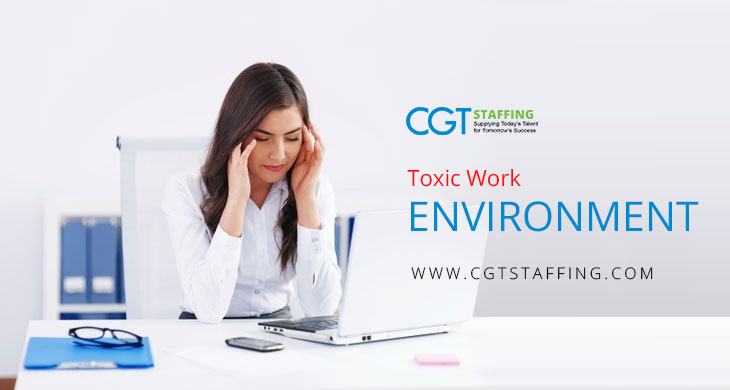Are you aware of how damaging a toxic work culture or workplace environment can be? Despite a growing positive shift towards inclusive workplaces, unbiased hiring, and diverse workforces, toxic work cultures continue to exist all over the United States. This encompasses far more than a few isolated incidences of rampant workplace toxicity.
Staggering research findings suggest that businesses may have lost up to $223 billion in revenue to toxic work environments in the five years between 2014 to 2019. The scope and scale extends far beyond individuals or teams. Visible and consistent toxicity impacts businesses in many critical areas that can further inhibit their ability to remain viable.
The cost of allowing toxic employees to continue working in their roles usually outweighs the savings of a high-performing employee. Even if your toxic worker is also your highest performer, the net effect of the savings and costs is not in your favor.
A study of over 60,000 American workers published by the Harvard Business Review indicates that terminating a toxic new hire as quickly as possible can save the average workplace up to $12,500. In the same comparative period, the average ideal performer that embodies a great work ethic, professional values, and consistently high performance brings in savings of approximately $5,300.
Letting go of a toxic hire expeditiously will usually help you save more money than hiring a star performer.
Beyond the financials, workplace toxicity can inhibit productivity, workforce morale, employee turnover, future hiring prospects, and more. Still not convinced? Read on to find out how toxic workers and workplaces can be counterproductive to business goals.
Table of Contents
Workers Lose Motivation
This is the very first area to examine when looking at how toxicity impairs an employer’s business and workflow. Businesses depend on reliable and motivated workers to bring a positive can-do attitude, innovation, and consistent value to their roles every day. The most successful teams and firms are the ones that can maintain or even improve motivation levels among their workforce.
Unfortunately, toxicity in the workplace can undo all of the hard work you put into building a motivated workforce. Toxicity can take different forms and will affect different workers in different ways. The impact will never be limited to a single worker or his or her motivations.
For example, a toxic culture that supports or tacitly colludes with harassment in the workplace will see sharp drops among key worker demographics. For example, female workers will not want to work there, and younger politically correct workforces may even refuse to work in solidarity. As motivation levels begin to drop, you should be very concerned and act quickly to locate the toxic individual and the loopholes that protect them.
Productivity Levels Drop Sharply
Happy workers are usually the most productive workers. These are the ones that are glad to be in their role, are passionate about what they do, and make meaningful contributions to tasks. All of these are valuable traits that can maximize worker productivity. When motivated, workers will even go beyond the confines of their job descriptions and the responsibilities associated with their role.
The longer toxicity festers in a workplace, the more workers are sapped of motivation. Employee motivation is directly related to employee productivity.Just as motivated workers generally perform better, a loss of motivation will inevitably lead to a loss in productivity.
Workplace discrimination is a good example of how severely a toxic work element can impact overall productivity. Ultimately, toxicity impairs the ability of an individual or team to deliver optimal output. In revenue-generating functions, this reduced productivity means you’re losing money to unnecessary toxicity.
Increased Probability of Litigation
For employers that believe they can deal with toxic workers and work cultures internally, a rude awakening is in order. Thanks to the rise of social justice movements and a greater awareness of workplace rights, workers are often very well aware of the options that are open to them. That includes any legal recourse allowed to them under company policy or federal, state or local laws. A toxic work environment lawsuit is not the remote possibility that many employers mistake it to be.
A worker that was wrongly terminated could very well file a wrongful termination suit against you. Similarly, a worker that was not offered the necessary support or reaction after repeatedly reporting bullying in the workplace may resort to a negligence suit against you as well. As a civil suit, this can lead to expensive legal fees, fines, damages, and even out-of-court settlements; all of which could have been avoided by simply taking corrective action against toxicity.
Employee Turnover Rates Climb Higher
A toxic worker, team, or workplace doesn’t just harm employee morale or productivity. A study from The Society For Human Resource Management reveals that one out of every five American workers has left a job at some point because of an unhealthily toxic work environment.

Moreover, nearly 49% of all American employees have considered leaving an organization based on a toxic work culture or line manager. The employee turnover ratio of your business compares the number of employees you hire versus the number who decide to leave your organization. A suitably low ratio is acceptable, but a significant increase in the ratio is a disturbing sign.
As any hiring manager knows, the cost of sourcing, screening, interviewing, hiring, onboarding, training, and integrating a new employee into your existing workforce is significant. All of it goes to waste, and the entire process has to be repeated again to find a replacement for the outgoing worker.
A toxic workplace typically has high turnover rates. In the worst cases of high employee churn, businesses can get stuck in a vicious cycle of hiring, firing, and rehiring. If the cost of employee turnover becomes too common and too frequent, it could endanger business sustainability, and that is exactly what a toxic workplace can lead to if not addressed.
Damage To Employer Brand
Outgoing employees who worked in a toxic environment will most likely not remain silent about their experiences. Social media and platforms like Glassdoor and LinkedIn make it very easy for outgoing workers to communicate with their network as well as with people who may have been considering you as a potential employer. The danger of your brand being negated in particularly toxic cases is very real.
Once compromised, you’ll find it very difficult to repair your employer brand. Your employer brand is the value proposition you offer as an employer to potential candidates. It is a mix of your work culture, your business reputation, employee word-of-mouth, and anything else that adds value to how you are perceived in the industry from an employee perspective. Once you acquire a reputation for being a toxic and unhealthy employer, you will have to work hard to get rid of that stigma. Otherwise, you’ll be a less-than-ideal potential employer for the foreseeable future.
Diminished Ability to Fill Key Talent Gaps
The damage to your credibility and reputation cannot be underestimated. You may think you can gloss over any past unpleasantness when seeking out new workers. However, you may find that your ability to source high-quality talent has diminished considerably as a direct result of a tarnished employer brand. The internet and its netizens at large have very long memories.
With social media visibility and near-instant news sharing, you can be sure that the candidate pool has a tainted perception of you. Even if you have improved working conditions and policies, workers will be very wary of joining your organization. You will have to work very hard to convince them otherwise. Even more importantly, you may permanently lose access to the caliber of talent that you need the most.
This will wreak havoc on talent acquisition as key talent gaps appear, and you have no way to staff them except with less-than-ideal candidates. Very soon, your business may have to reassess its succession and change management strategies. Even your local staffing agency may find it difficult to supplement your hiring efforts successfully.
The most important thing to note about all the impacts we just discussed is this: they can be avoided simply by addressing toxic workplace elements and removing them as soon as possible. It usually turns out to be a much cheaper fix than allowing the workplace to self-correct and watching it deteriorate beyond repair.
Frequently Asked Questions
What is a toxic work environment?
A negative working environment that makes workers feel unsafe, discriminated against, insecure, bullied, or abused.
How to deal with a toxic work environment?
Pay attention in exit interviews to identify toxic elements that increase turnover, and make the necessary changes to remove them.
How to fix a toxic work environment?
There is no sure way to fix a toxic work culture, but you can remove employees who are perpetuating the toxicity, and reinforce the core values of your workplace in positive ways.
What causes a toxic work environment?
Anything ranging from a supervisor who bullies his team to managers that are biased or discriminating against certain workers to how the company treats its workers in general.
Is a toxic work environment illegal?
Toxic work environments aren’t illegal, but they’re still not how you want to shape your workplace.
How to change a toxic work environment?
Implement policy changes, stamp down on harassment and abuse, and take strict action against bullying, discrimination, or bias.
Is my work environment toxic?
Do you feel safe, motivated, and engaged at work? If so, you’re good. But if you’re losing interest, finding it harder to show up, or feel afraid of going to work, you may have a toxic work environment.
